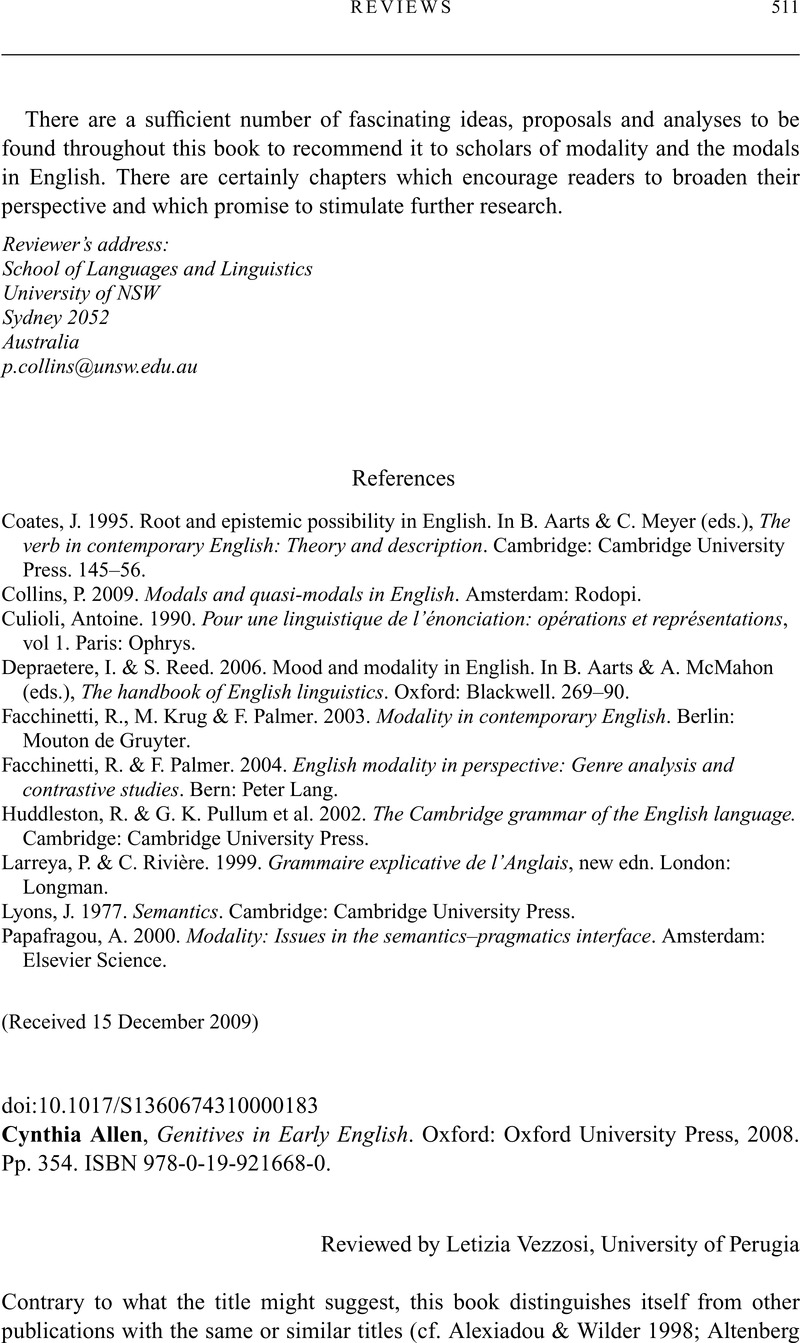Koike, Takeshi.
2004. The analysis of the genitive case in Old English within a Cognitive Grammar framework, based on the data from Ælfric's
Catholic Homilies First Series. PhD thesis, Department of Linguistics and English Language. University of Edimburgh.
Google Scholar 